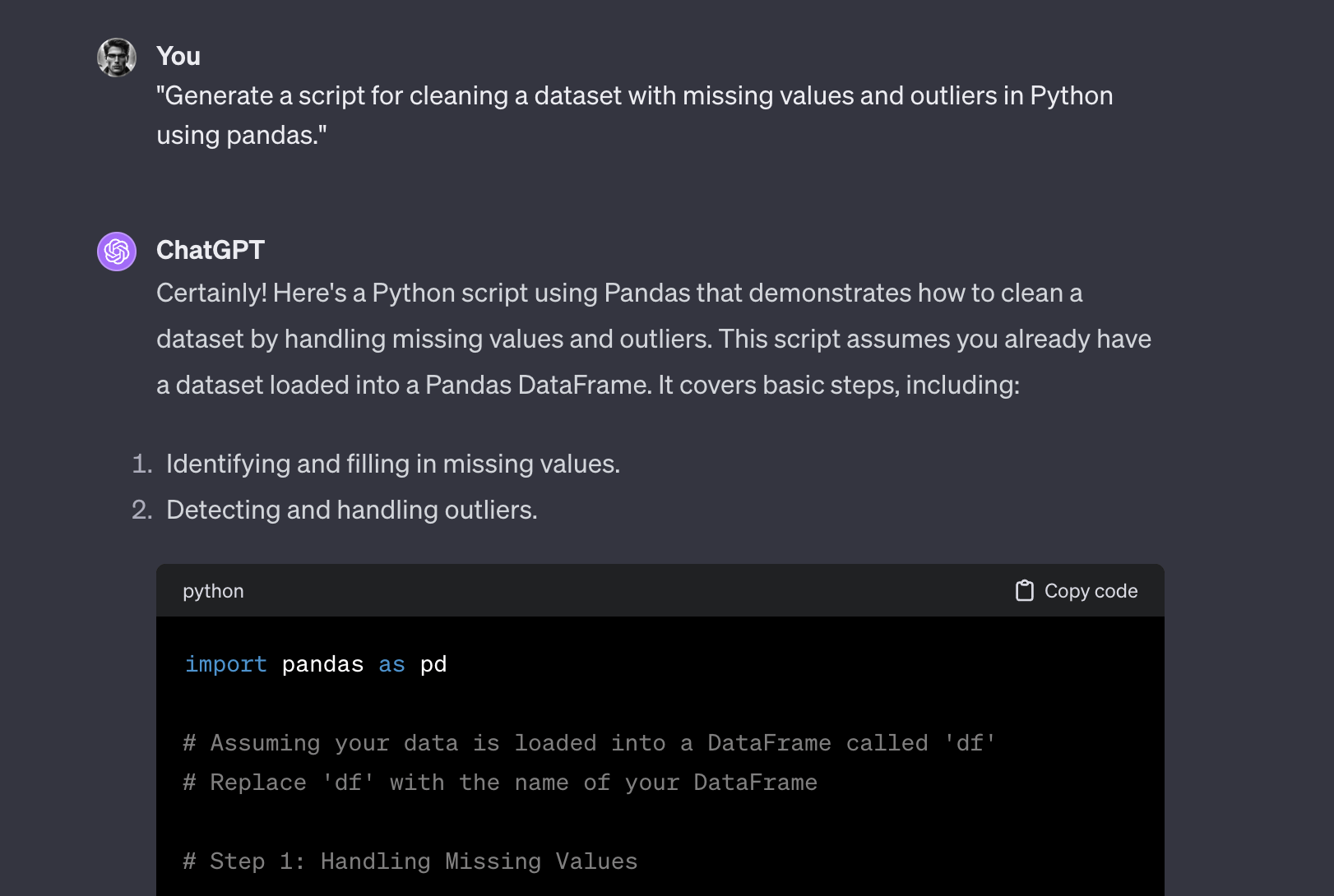ChatGPT is a powerful analytical tool for data science, benefiting from AI capabilities and natural language processing. It excels in providing information, generating and explaining code, fostering idea generation, and supporting education and workflow automation. However, it has limitations in handling real-time data, interacting with databases, delving deep into advanced topics, potential bias, and personalized data analysis.

“`html
Best ChatGPT Prompts for Data Science
ChatGPT is a powerful analytical tool that can swiftly analyze massive datasets and simplify complex mathematical topics with the help of artificial intelligence.
How to Use ChatGPT for Data Science
ChatGPT excels in analysis and data point summary, making it valuable for identifying unique patterns and conducting statistical analyses.
However, it’s important to be aware of its limitations, such as poor arithmetic and potential unreliability due to being a project under construction.
ChatGPT Prompts for Data Cleaning in Data Science
Examples include generating scripts for cleaning datasets, explaining best practices for data normalization, and automating data cleaning processes.
ChatGPT Prompts for Data Analysis (EDA)
These prompts cover scripts for performing exploratory data analysis, interpreting box plots and histograms, and identifying trends in time-series datasets.
Capabilities of ChatGPT for Data Science
- Accessibility of Information: ChatGPT can quickly provide information on a wide range of data science topics, making it a useful tool for learning and reference.
- Code Snippets and Algorithm Explanation: It can generate and explain code snippets in various programming languages commonly used in data science, such as Python, R, and SQL, which is helpful for beginners and intermediate users.
- Idea Generation and Brainstorming: ChatGPT can assist in brainstorming ideas for data science projects, analyses, and solutions to specific problems, fostering creativity and innovation.
- Natural Language Processing (NLP) Capabilities: With its advanced NLP skills, ChatGPT can analyze and interpret textual data, providing insights into sentiment analysis, text summarization, and more.
- Support in Learning and Education: It’s an excellent educational tool for explaining complex data science concepts, algorithms, and methodologies in an easily understandable manner.
- Workflow Automation Tips: ChatGPT can suggest ways to automate and optimize various data science workflows, enhancing efficiency and productivity.
Limitations of ChatGPT for Data Science
- Lack of Real-Time Data Processing: ChatGPT cannot process real-time data or perform live analysis, limiting its use in dynamic data science applications requiring up-to-date information.
- No Direct Interaction with Databases or Tools: It cannot directly interact with databases or data science tools, requiring users to implement any suggested code or solutions manually.
- Limited Depth in Advanced Topics: While effective for general concepts, ChatGPT may not have the depth of knowledge required for highly specialized or cutting-edge data science topics.
- Dependence on Pre-Trained Knowledge: Its responses are based on pre-trained data, and it may not be updated with the latest research, tools, or data science trends beyond its last training data.
- Potential for Biased or Inaccurate Information: The model might inadvertently generate biased or incorrect information if such patterns existed in its training data.
- No Personalized Data Analysis: ChatGPT cannot perform personalized data analysis or predictions specific to an individual’s or organization’s unique dataset.
We hope the list of prompts above helps enhance and ease your workflow, enabling greater productivity by unlocking the power of generative AI.
“`
This HTML snippet covers the beginning of the provided text and showcases the use of h3, h4, and bold tags to highlight important information. It’s a simplified version of the original text with practical solutions and value highlighted.
List of Useful Links:
- AI Lab in Telegram @aiscrumbot – free consultation
- 120+ Best ChatGPT Prompts for Data Science
- GreatAIPrompts: AI Prompts, AI Tools & AI News
- Twitter – @itinaicom


























